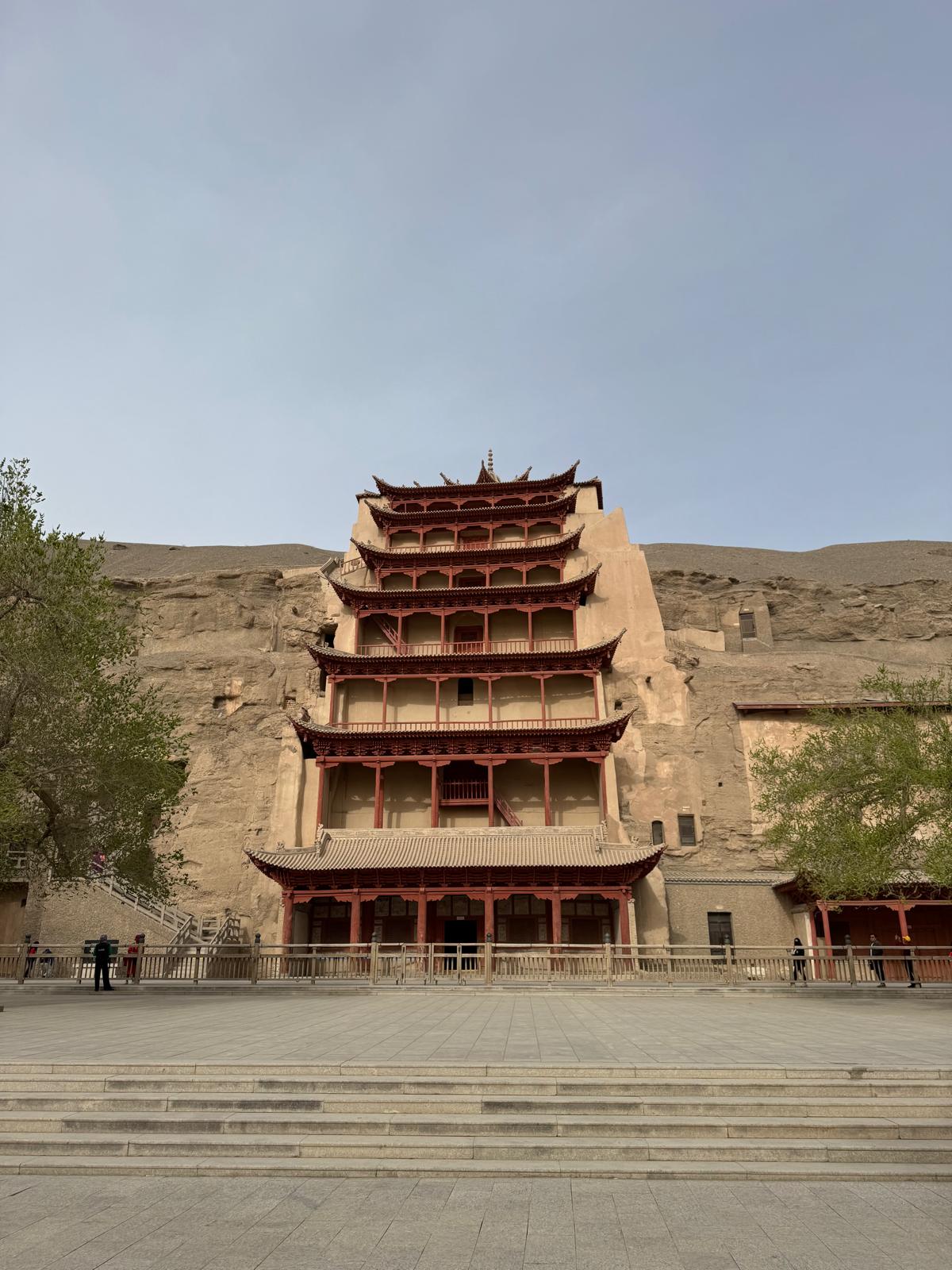



As a Google Local Guide with a passion for cultural heritage, I can confidently say that the Mogao Caves (also known as the Thousand Buddha Grottoes) are among the most extraordinary and mesmerizing sites I’ve ever had the privilege to visit.
The Mogao Caves are an unparalleled treasure trove of Buddhist art and culture, representing over a millennium of history along the Silk Road. Each cave is a masterpiece, with intricate murals, sculptures, and manuscripts that provide a vivid portrayal of the spiritual and artistic life of ancient China. The sheer diversity and detail in the artwork are breathtaking, offering a deep dive into the religious, cultural, and artistic traditions of the time.
The conservation work done at Mogao is exceptional. Despite the age of the murals and statues, the colors remain vibrant, and the details are remarkably well-preserved. The efforts to protect this UNESCO World Heritage Site are evident, and the visitor experience is thoughtfully designed to minimize impact while maximizing educational value. The use of guided tours ensures that the historical context and significance of each cave are communicated effectively.
The guided tours provided are highly informative and essential for understanding the significance of the site. The guides are knowledgeable, offering detailed explanations that bring the history and art to life. Audio-visual presentations available before the tour begin also provide valuable context, making the visit even more enriching. The limited number of caves open to the public on each visit ensures that the experience is intimate and immersive, allowing for a deeper connection with the site.
There’s a profound sense of spirituality and reverence within the caves. As you explore the dimly lit grottos, you can feel the presence of history and the devotion of the monks who created these stunning works of art. It’s a humbling experience that invites reflection on the intersection of art, faith, and history.
The Mogao Caves site is well-managed, with excellent facilities, including a modern visitor center that provides comprehensive information and services. The pathways and access to the caves are well-maintained, ensuring a comfortable visit. The staff are courteous and eager to assist, enhancing the overall experience.
The Mogao Caves are a must-visit for anyone interested in history, art, or spirituality. The site offers an unparalleled glimpse into the ancient world, beautifully preserved and presented. It’s a place that leaves a lasting impression, both for its aesthetic beauty and its deep cultural significance. Highly recommended for travelers seeking a unique and profound...
Read moreLocated at: Dunhuang, Jiu Quan Shi, Gansu, China 🇨🇳 in the Gobi desert Hours of Operation: 8 a.m.–5:30 p.m. open 7 days a week
The Mogao Caves were inscribed on the World Heritage List in 1987. As a State Party, China has put all World Heritage sites under top-level protection. Mogao means “peerless.” Mogao Cave is sometimes known as “Caves of the Thousand Buddhas.”
It was first constructed in 366AD and represents the great achievement of Buddhist art from the 4th to the 14th century. 492 caves are presently preserved, housing about 45,000 square meters of murals and more than 2,000 painted sculptures. Cave 302 of the Sui dynasty contains one of the oldest and most vivid scenes of cultural exchanges along the Silk Road, depicting a camel pulling a cart typical of trade missions of that period. Caves 23 and 156 of the Tang dynasty show workers in the fields and a line of warriors respectively and in the Song dynasty Cave 61, the celebrated landscape of Mount Wutai is an early example of artistic Chinese cartography, where nothing has been left out – mountains, rivers, cities, temples, roads and caravans are all depicted.
This place managed to stay under the radar for centuries. Along a one-mile long trail of cliffs beside the Dachuan River are the Mogao Caves, a complex of human-made caves and cells that preserve Buddhist statues and paintings spanning a whole millennium, from the fourth to the 14th centuries. Part of this complex of caves and cells is also a library (Cave 17) that in addition to Chinese texts, also houses Tibetan, Turkic, and Hebrew documents. Unfortunately, most of the 50,000 documents found in the library were readily sold to foreign (mostly Western) hands. The most valuable of these was the Diamond Sutra, one of the oldest printed books in existence (now at the British...
Read moreCarved into the cliffs above the Dachuan River, the Mogao Caves south-east of the Dunhuang oasis, Gansu Province, comprise the largest, most richly endowed, and longest used treasure house of Buddhist art in the world. It was first constructed in 366AD and represents the great achievement of Buddhist art from the 4th to the 14th century. 492 caves are presently preserved, housing about 45,000 square meters of murals and more than 2,000 painted sculptures. Cave 302 of the Sui dynasty contains one of the oldest and most vivid scenes of cultural exchanges along the Silk Road, depicting a camel pulling a cart typical of trade missions of that period. Caves 23 and 156 of the Tang dynasty show workers in the fields and a line of warriors respectively and in the Song dynasty Cave 61, the celebrated landscape of Mount Wutai is an early example of artistic Chinese cartography, where nothing has been left out – mountains, rivers, cities, temples, roads and caravans are all depicted.
As evidence of the evolution of Buddhist art in the northwest region of China, the Mogao Caves are of unmatched historical value. These works provide an abundance of vivid materials depicting various aspects of medieval politics, economics, culture, arts, religion, ethnic relations, and daily dress in western China. The unique artistic style of Dunhuang art is not only the amalgamation of Han Chinese artistic tradition and styles assimilated from ancient Indian and Gandharan customs, but also an integration of the arts of the Turks, ancient Tibetans and other Chinese ethnic minorities. Many of these masterpieces are creations of an unparalleled...
Read more